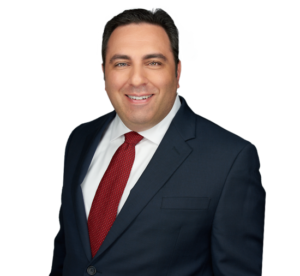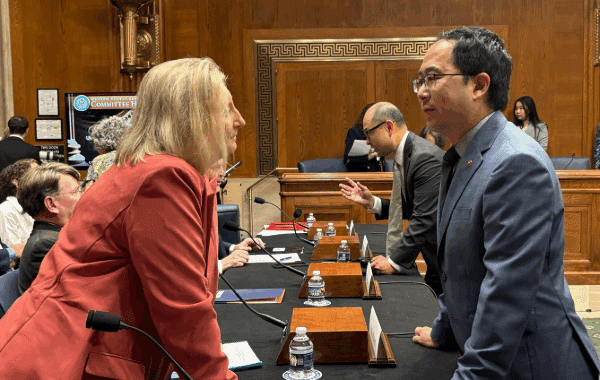New Jersey businesses with between 30 and 50 employees anywhere in the world will have a new law to deal with on June 30, the New Jersey Family Leave Act (FLA). The law currently applies to businesses with 50 or more employees as well as all state and local government agencies, regardless of size. However, on Feb. 19, 2019, Gov. Phil Murphy signed an amendment to the FLA extending it to employers with between 30 and 50 employees and provided businesses roughly four months to get prepared to comply with the June 30 effective date.
As an employment law attorney who assists businesses with their compliance efforts, including managing employee leaves, here are some practical pointers for businesses.
First, employers must be vigilant and proactive by knowing which laws apply to them given the number of workers employed. Not including the state FLA, there are five additional federal and state statutes that provide leave time to New Jersey workers – the federal Family and Medical Leave Act (FMLA), Americans with Disabilities Act (ADA), New Jersey Law Against Discrimination (NJLAD), New Jersey Security and Financial Empowerment Act (NJ SAFE Act), and the New Jersey Paid Sick Leave Law. Any of these may be applicable given the size of the employer and reason for the requested leave of absence. Given the facts of a particular leave situation more than one of these laws may apply and, thus, employers must have a working knowledge of all these laws, employees’ rights, management’s responsibilities, as well as have the necessary policies in place.
The state FLA is similar to the federal Family and Medical Leave Act (FMLA) in that it protects an employee’s job when he or she needs leave from work for an extended period to take care of a family member. Note that the FLA (unlike the FMLA) does not allow leave for the employee’s own health condition. Rather, leave per the FLA is available to an eligible employee to care for a family member, such as to care for a newborn child within 1 year of the child’s birth or placement for adoption or foster care or a family member with a serious health condition.
For a description of the eligibility requirements and additional information about the FLA, go here.
Length of Leave
An eligible employee may take a maximum of 12 weeks of unpaid leave within a 24 month period beginning on the date the employee’s first FLA leave begins. Employers need to properly document the employee’s leave and record the dates of the leave in order to properly track the leave, especially given that FLA leave time is based on a 24-month period as opposed to a 12-month period.
Advance Notice
The employer’s FLA policy must make clear how much advance notice the employee must provide when requesting FLA leave. Except when emergent circumstances require shorter notice, the employee must give the employer the following notice per the FLA:
- For intermittent leave, at least 15 days’ notice;
- For consecutive leave to care for a newborn or a child placed for foster care or adoption, at least 30 days’ notice; and
- For consecutive leave to care for a family member with a serious health condition, notice “in a reasonable and practicable manner.”
- In emergent circumstances, the employee should give the employer as much notice as possible.
Medical Certification
To ensure that the employee meets the eligibility requirements, it is wise for the employer to require the employee to submit a medical certification issued by the healthcare provider of the employee’s family member before the requested leave begins and state: (1) the date on which the serious health condition commenced; (2) the probably duration of the condition; and (3) the medical facts within the provider’s knowledge regarding placement, whichever is appropriate. Where the medical certification is for the birth or placement of a child, the certification need only state the date of birth or date of placement, whichever is appropriate.
Pay and Health Benefits During Leave
Although leave taken pursuant to the FLA is unpaid, the employee may elect (but cannot by law be required) to utilize his or her available paid vacation or paid sick leave and, thus, that portion of the leave will be with pay. The usage of vacation and/or paid sick time does not extend the amount of FLA leave, but rather runs concurrently with the FLA leave.
During the period of the leave, the employee’s health benefits shall continue under the same terms and conditions that applied during active employment. Therefore, if the employee paid a portion of the medical insurance premium prior to the leave of absence he/she will continue to make that contribution toward the payment of the benefits during the leave. I recommend that at the beginning of the leave of absence, a payment schedule should be established for the premium contributions.
While on approved leave per the FLA, the employee may seek income replacement benefits from the State of New Jersey per the New Jersey Family Leave Insurance Benefit (NJFLI) law. Notably, recent amendments to the NJFLI will double the amount of time that an employee can receive NJFLI benefits from 6 weeks to 12 weeks in a one-year period, beginning July 1, 2020; expand the amount of intermittent leave NJFLI benefits from 42 days to 56, beginning July 1, 2020; increase the maximum weekly benefit amount; and permit an employee that holds multiple jobs to receive NJFLI benefits from one job, while continuing other employment.
Return from Leave
The employer must return the employee to his or her same position or a position with equivalent status, pay, benefits, and other employment terms. Certain highly compensated employees may be exempted from this requirement and may not be returned to the same or similar position in accordance with applicable laws, which the employer should discuss with legal counsel.
Training Management
The interplay of the laws discussed above poses significant challenges for employers, and is a source of confusion and anxiety for many Human Resources professionals across the state. Employers are well-advised to provide training to all levels of management on employees’ rights under the laws and the employer’s obligations. After all, when an employee needs to take an extended leave, their immediate supervisor is usually the first person he or she goes to, especially in smaller businesses -that may not employ a human resources professional. If the supervisor mishandles the leave request simply because he or she is not informed about the law and management’s responsibilities, then the business may face litigation as well as a decline in employee morale.
I regularly conduct practical and interactive training for businesses at their place of business to demystify the many federal and state leave laws, and explain to supervisors how to properly manage an employee’s leave of absence.
Handbook Policies
Employers with 30-49 employees will need to establish the necessary policies, forms, and procedures to comply with the FLA. [Employers with 50 or more employees need to modify their FLA policies too, if they haven’t already done so, to address the many amendments to the FLA and NJFLI signed into law by Governor Murphy on February 19, 2019.] Thus, employers are well-advised to review and update their employee handbook with the assistance of an experienced employment law attorney. This is a service that I regularly provide to businesses to assist them with their compliance efforts.
Given the complexity of the various leave laws and the importance that the leave is administered correctly, this is a situation where the saying “an ounce of prevention is worth a pound of cure” is most definitely applicable.
Attorney Michael A. Shadiack is a partner in and the Chair of Connell Foley LLP's Labor & Employment Law Practice Group. He provides proactive compliance counseling, employee handbook services, litigation defense, and practical on-site training programs on human resources laws to employers of all sizes.





